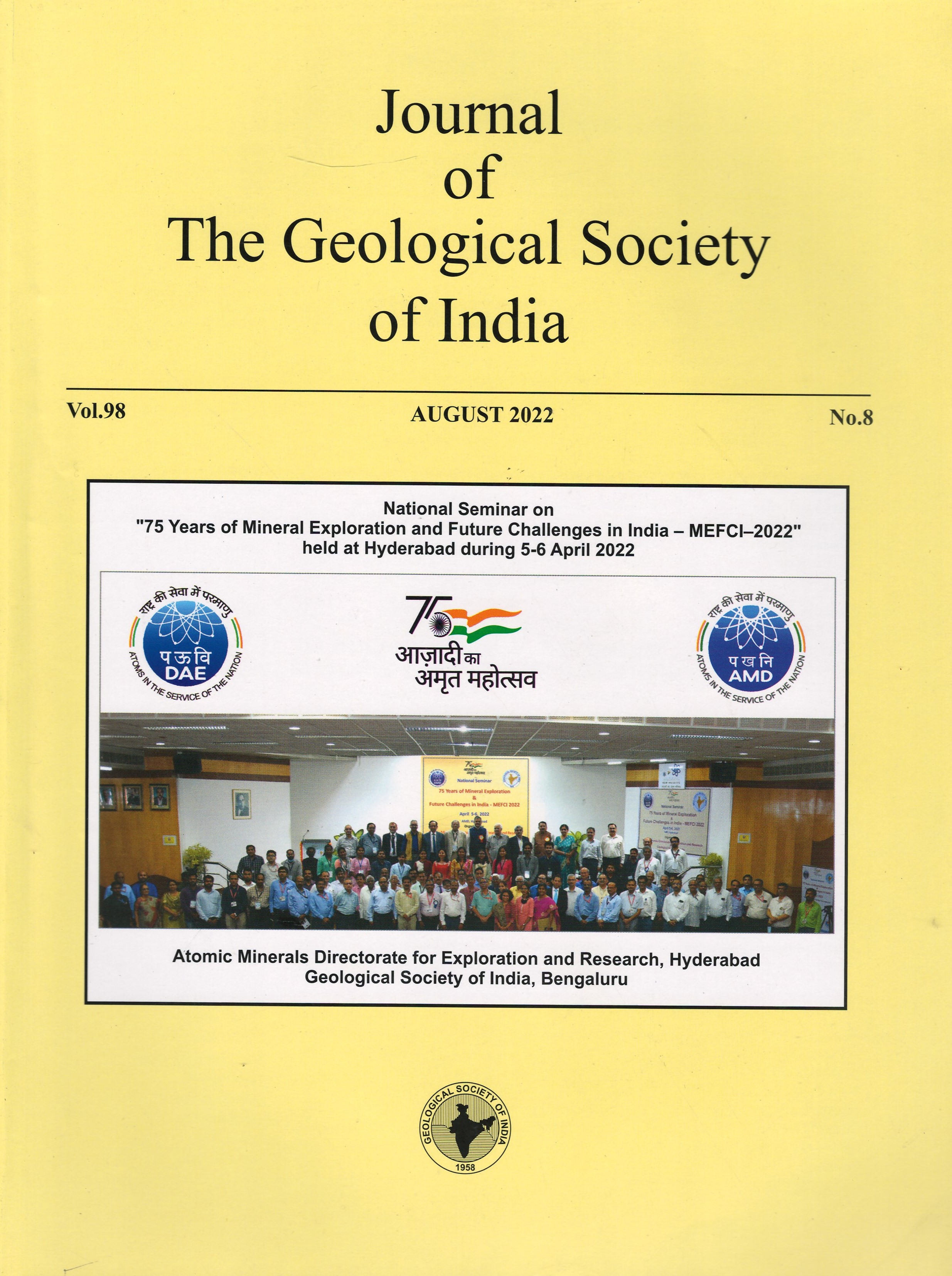Thorium Metallogeny in U-Cu-REE bearing Singhbhum Shear Zone, Eastern India
DOI:
https://doi.org/10.1007/s12594-022-2123-xKeywords:
No KeywordsAbstract
The long arcuate Singhbhum Shear Zone (SSZ) of around 160 km length having roughly an E-W trend hosts many uranium deposits and working uranium mines viz., Mohuldih, Bandhuhurang, Turamdih, Narwapahar, Bhatin, Jaduguda and Bagjata from west to east in addition to Cu deposits viz., Rakha, Mosabani etc. REE is well known from Kanyaluka area. Recent sub-surface exploration for uranium by AMD unravelled occurrence of thorite (ThSiO4)-bearing bands in a number of locations in western, central and eastern sectors of uranium mineralisation in SSZ, spanning over the entire shear zone. Thorite is observed in various host rocks involving metapelites of Dhanjori and Singhbhum Group and also in the Soda Granite/ feldspathic schist unit emplaced along the shear zone at the contact between the two groups. The individual lithounits that host thorite-bearing bands are restricted along the Singhbhum Shear Zone and include feldspathic schists (possible derivative of Soda Granite), albite veins, quartz-chlorite schists, quartz-biotite schists and sericite/muscovite-quartz schists. The thorite bearing zones transgresses lithology, stratigraphy as well as uraniferous zones along the shear zone evidently placing them as epigenetic hydrothermal mineralisation possibly later to major uranium metallogeny. Thorite occurs as discrete, rounded as well as subhedral to euhedral grains in various metapelites. They also form veins of their own besides occurring as phases within veins of albite and magnetite-apatite along the shear zone. Such multiple modes of occurrence and varied associated mineralogy suggest hitherto unknown thorium related hydrothermal mineralisation in SSZ. Presence of secondary thorium phases such as brockite (Ca-Thphosphate) as well as post tectonic vein-type occurrence, points towards the mobility of thorium under a hydrothermal regime as well. However, present study thus, for the first time, establish the occurrence of thorite along with REE-Th minerals showing definite evidences of thorium mobilisation in several sectors of the well know U-Cu province of Singhbhum Shear Zone. Thorium- REE mobility is a widely understudied domain and the present findings place the SSZ as an ideal ground for exploring the concept with more understanding of this metal.

 D. K. Sinha
D. K. Sinha






